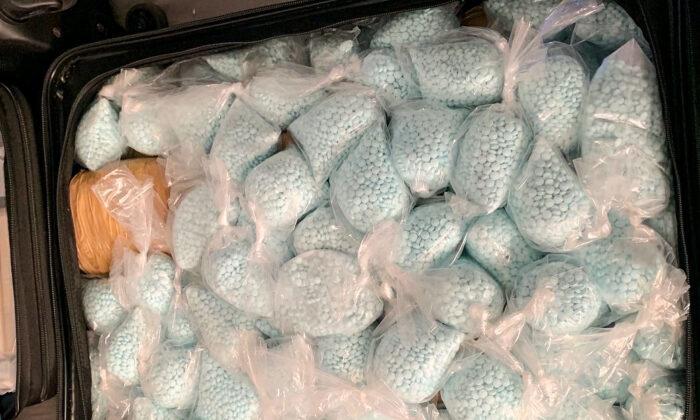Commentary
The devastating fentanyl epidemic in San Francisco, California has become so catastrophic that on April 21, Governor Gavin Newsom announced that the state will send in the National Guard and California Highway Patrol to help.
As part of a new
collaborative operation with the San Francisco Police Department and the San Francisco District Attorney’s Office, California Highway Patrol will “assist local law enforcement in combatting the fentanyl crisis through technical assistance, training, and drug trafficking enforcement,” and the National Guard will “identify specialist personnel and resources to support analysis of drug trafficking operations, with a particular focus on disrupting and dismantling fentanyl trafficking rings.”
In San Francisco, the majority of overdose deaths are attributed to fentanyl, with more than
70 percent of overdose deaths in 2022 caused by the deadly drug. Residents and politicians have condemned San Francisco’s open-air drug markets plaguing the city and profiting off those struggling with and suffering from addiction.
Last year, more than 2,200 emergency calls were made to the San Francisco Department of Public of Health requiring its
street teams to respond to overdoses, offer medical and mental health assistance, and provide medications for addiction. The fentanyl crisis has escalated this year, with the
governor’s office reporting that overdose deaths in San Francisco have risen by 40 percent in just the first three months of 2023.
While there has been recognition of the devastation wreaking havoc in San Francisco, the city’s policies have been nothing short of disastrous.
In December 2021, San Francisco Mayor London Breed declared a 90-day state of emergency over crime and drug overdoses in the Tenderloin district, a neighborhood where the crisis is most pronounced. The
Mayor pledged to “disrupt the illegal activity in the neighborhood, to get people the treatment and support they need, and to make the Tenderloin a safer, more livable place for the families and children who call the neighborhood home.”
However, as
Stanford Sociology Professor Forrest Stuart found in an analysis of public records, there was little difference in the number of arrests made in the three-month period when the emergency order was in effect versus the three-month period after the emergency order expired.
San Franciscans, fed up with the city’s refusal to crack down on dealers, recalled District Attorney Chesa Boudin in June 2022. Under Boudin, dealers were effectively given a free pass to brazenly proffer drugs in San Francisco. According to the
New York Post, Boudin’s office only secured three convictions for drug dealing in 2021, and zero for selling fentanyl.
Further, Mayor Breed poured millions of taxpayer dollars into the Tenderloin Center, which was announced in January 2022 and remained open for less than one year.
Interviews with visitors to the site confirmed they had seen or used illegal drugs at the Tenderloin Center, while others said they didn’t know that rehabilitation resources were being offered. There were more than 20,100 visits to the center for various services from Jan. 31-March 27, 2022, but less than 15 resulted in “completed linkages” for drug treatment.
The Tenderloin Center ultimately became what the
San Francisco Standard called a “de-facto safe consumption site” and was shut down in
December 2022 amidst the center’s failure to make progress toward alleviating the ongoing fentanyl crisis.
As residents on the ground document the devastation overwhelming San Francisco’s streets on social media, it is abundantly clear that city’s inability to address the fentanyl crisis is jeopardizing residents’ safety, worsening users’ addiction, and augmenting their loved ones’ suffering.
Lisa Richofsky, who has a 33-year-old daughter who is addicted to meth and fentanyl and living in a tent in San Francisco, said, “If they have the drugs there, and they need the drugs every couple of hours, they’re going to want to live on the streets, and they’re going to want to get those drugs.”
San Francisco must diligently work to arrest and prosecute dealers and enforce policies that, rather than encourage drug use, work to liberate users from their addiction. Compassionate policy for those suffering on the streets must begin with the recognition that empathy does not equate to enabling.
The people of San Francisco must demand more from their elected leaders and work together to defeat the city’s fentanyl crisis.
From Gingrich360.com
Views expressed in this article are opinions of the author and do not necessarily reflect the views of The Epoch Times.





